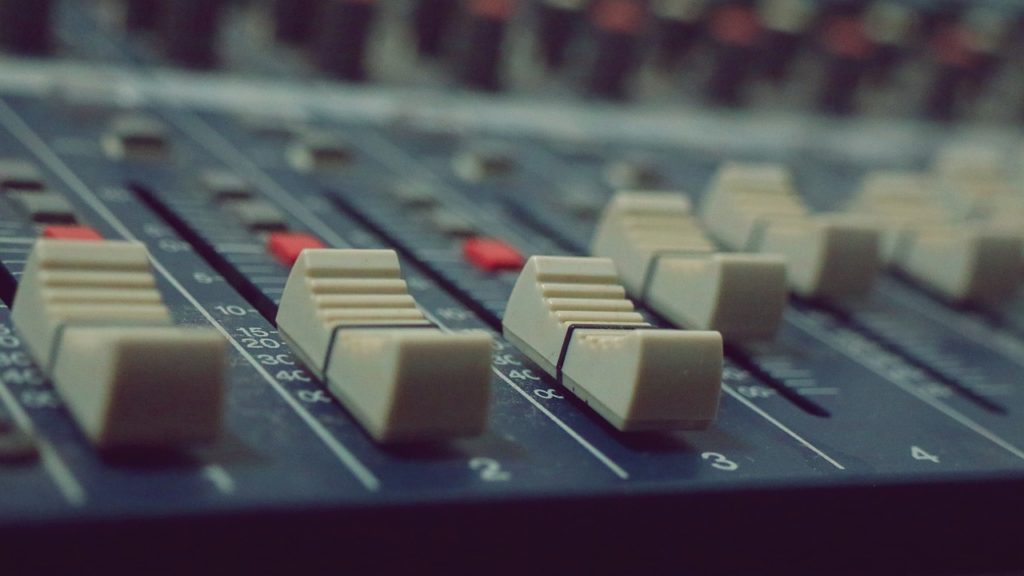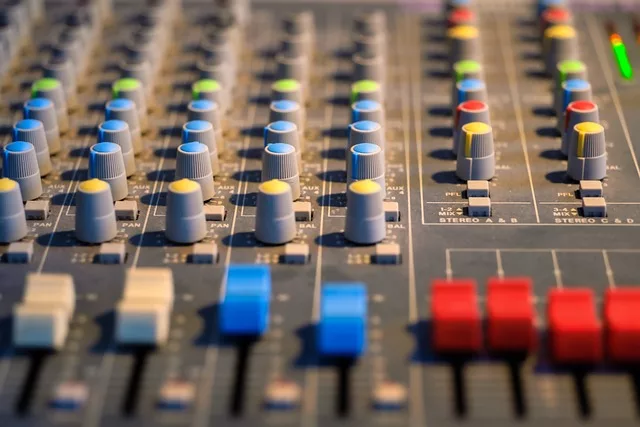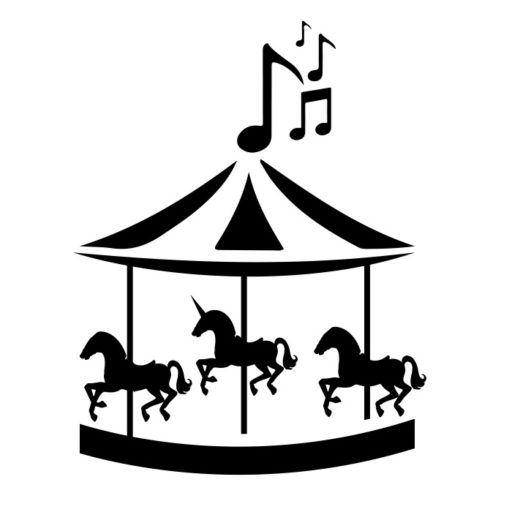Note: This article contains affiliate links. If you buy something through one of those links, Parlor City Sound may earn a small commission, and it doesn't cost you anything when that happens. We only link to gear and services relevant to the topic. And our opinions aren't for sale. If we recommend a product, it's because we think you might like it as much as we do.
There’s a good chance you’ve seen photos or videos of a sound engineer moving around the sliding faders on a big audio mixer. And that device probably looks pretty intimidating, right? There are so many knobs and buttons and lights … what is an audio mixer, even? And what is an audio mixer used for? Do you need one in your home recording studio?
An audio mixer is a device that lets you take a bunch of inputted audio signals and “mix” them together into a smaller number of output signals. That may sound confusing, but don’t worry, we’ll explain how mixers work shortly!
At first glance, audio mixers are confusing. But once you really examine one up close, you’ll come to realize that audio mixers are pretty straightforward to use. And they can prove extremely useful in a home recording studio, especially if you’re recording several analog instruments with microphones (like, for instance, if you’re recording a full band at home). So let’s learn about audio mixers, how they work, and what they’re used for in this comprehensive guide from Parlor City Sound.
What’s an audio mixer? And how does an audio mixer work?

Audio mixers (also known as mixing consoles, mixing desks, and mixing boards) have played an integral role in sound recording and production for nearly a full century. Today, you’ll find them in home recording studios and big AAA professional studios alike. But what is an audio mixer or mixing console? And how does an audio mixer work?
Audio mixers have some number of analog inputs—usually an even number ranging from two to 32. These are usually XLR or 1/4″ inputs, if not both. We refer to these as channels.
A lot of mixers have channel strips, too, where each channel gets a dedicated volume fader and control knobs for gain and parametric equalization. Channel strips often have phantom power as well, providing power to condenser microphones.
All of those inputs then get mixed, or combined, together and leave the mixer via busses and/ or subgroups. We’ll explain these in a bit, but the essence of these is pretty straightforward: the busses/ subgroups take lots of input channels and mix them together into a smaller number of outputs.
What is an audio mixer used for?
Put simply, an audio mixer is used for taking a lot of inputs and putting them into a smaller number of inputs on another device.
For instance, let’s say you’re recording a full drum kit. In our example, we’ll say you’re running eight microphones from your drums. But your audio interface only has two analog inputs. With a mixer, you can mix those eight microphone signals together and output them to just two channels, so you can now use all eight mics with your two-input audio interface.
With an audio mixer, you can record an entire band without having to constantly unplug mic cables to plug in other ones (which gets annoying super fast). It also means you can use a smaller audio interface, too. Mixers are pricey, costing hundreds or even thousands of dollars. But running a 24-channel mixer to an audio interface is still going to be a cheaper option than setting up a Dante or AVB audio network, or daisy-chaining a bunch of audio interfaces together to reach 24 inputs.
Large-format audio interfaces do exist of course, like the Antelope Orion 32. But that interface costs $3,300, and that’s before you start adding in the cost of converting XLR and 1/4″ cables to DB-25. Oh, and it doesn’t have microphone preamps, either. That audio interface is easily one of the best on the market, but it’s not an especially great option for most home recording studios. A mixer and a smaller audio interface get the job done a lot cheaper.
What is a mixer bus?

You’re going to frequently see two terms being used when browsing audio mixers: “bus” and “subgroup”. Simply put, a bus is an output signal path—your inputs end up getting mixed into one or more busses. Most mixers have a main stereo bus, often referred to as a “main L/R mix” (L and R represent left and right). so if your mixer had eight inputs, you’d mix those down into just two busses (left and right).
Most modern mixers just have two busses: that main L/R mix. Some have three, with the third being a center bus. If you’re shopping used mixers, you’ll sometimes find mixers with four or eight busses too. These are especially useful if you’re working with an audio interface that has four or eight inputs.
Subgroups essentially work the same way as busses. You can send your signals into subgroups to process them further or output them from the mixer directly. Most mixers that have subgroups offer at least four of them, which can give you more output options.
Many (but not most) mixers on the market today have four or more subgroups. This means you can output four signals from your mixer to an audio interface rather than just two, which in turn means you can track more channels with a slightly larger audio interface and still not break the bank to do it.
How do you choose an audio mixer?
Audio mixers come in all sorts of shapes and sizes, with a variety of different features. You’ll find mixers on the market today that have built-in digital effects, sends and returns on every channel (those simply “send” audio away to outboard signal processors and then “return” the signals back to the mixer), and even full-fledged audio interfaces built right into them.
Before you start window shopping for an audio mixer, you’ll want to think about your recording process in depth and answer a few questions for yourself:
- The most obvious question: what’s your budget? Can you afford to get something bigger than you actually need to future-proof your studio?
- How many XLR microphones do you have, and how many do you need plugged into the mixer all at once?
- Do your microphones need phantom power or will you use outboard microphone preamps?
- Are you recording guitars with a direct line in? Do you need hi-Z inputs?
- How big is your audio interface? Would having additional busses or subgroups help spread out your tracks better?
What audio mixer should you buy?
There are countless mixers to choose from, which begs the question: what audio mixer should you buy? Well, that’s a tough question, unless you answered those questions in that last segment. You’ll want to figure out exactly what it is you need from your mixer before you start the window shopping process.
Behringer is known for their low-budget equipment, but their mixers are usually surprisingly good, especially given their reasonable prices. Take a look at the Behringer Xenyx 2442USB and the Behringer Eurodesk SX3242FX. These are great examples of low-cost mixers with enough inputs to record a full band.
If you can go up in price, the Mackie Onyx24 is quite frankly the best home recording studio on the market today for less than $1000. It has a built-in 24-bit 96 kHz audio interface that sends 24 tracks to your DAW. Yes, you read that right. This is a 24×4 mixer that can output all of its input channels to your DAW at high resolution. We’d love to see more gear compete with that, but as it stands, the Mackie Onyx24 truly is in a class of its own.
Some other brands that build great mixers for home recording studios include Alesis, Allen & Heath, Midas, Peavey, PreSonus, Soundcraft, TASCAM, and Yamaha. You usually can’t go wrong with any of those brands. We adore Soundcraft boards in particular. They have a really great sound and excellent EQs. If Soundcraft made a board with the features of that Mackie Onyx24 … hoo boy. But that’s a rant we’ll save for another time.




